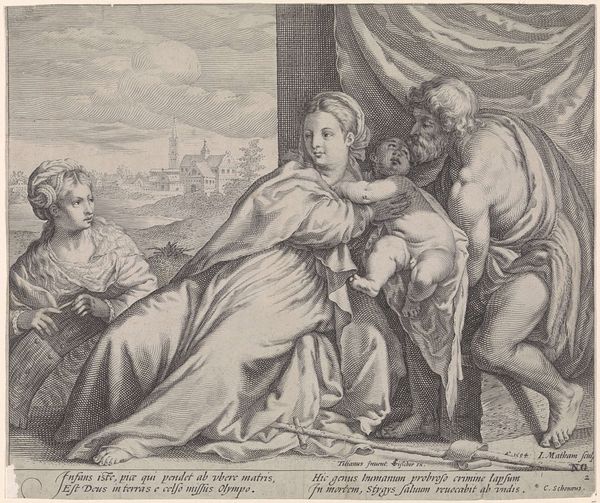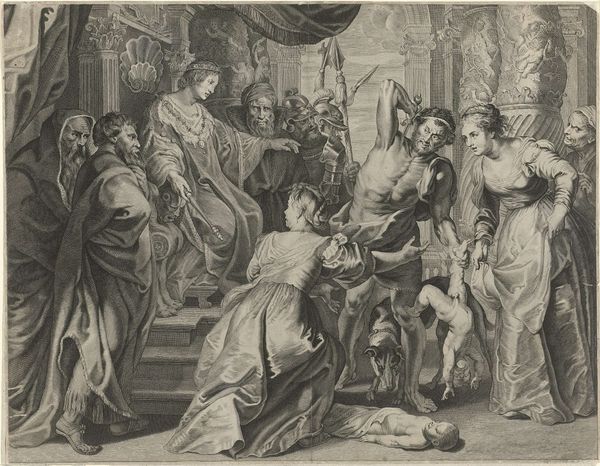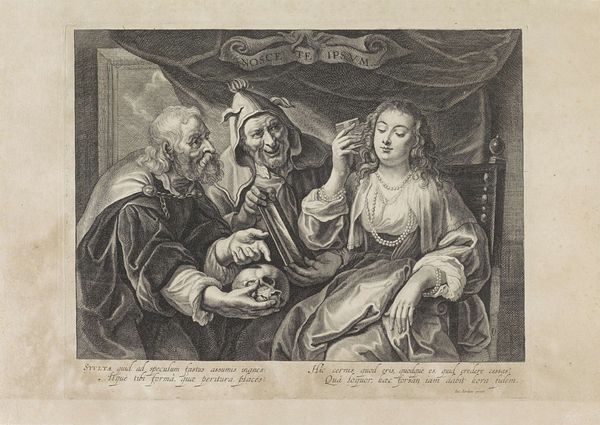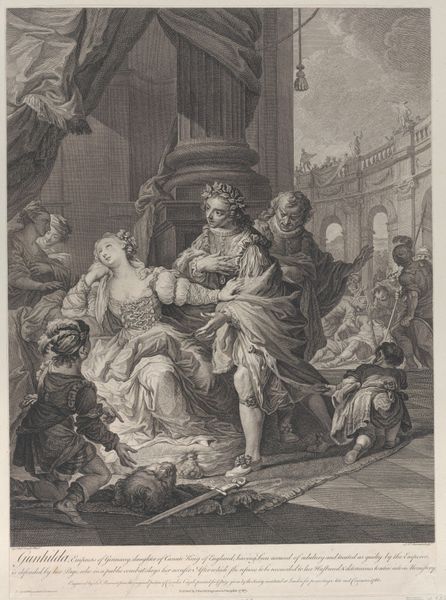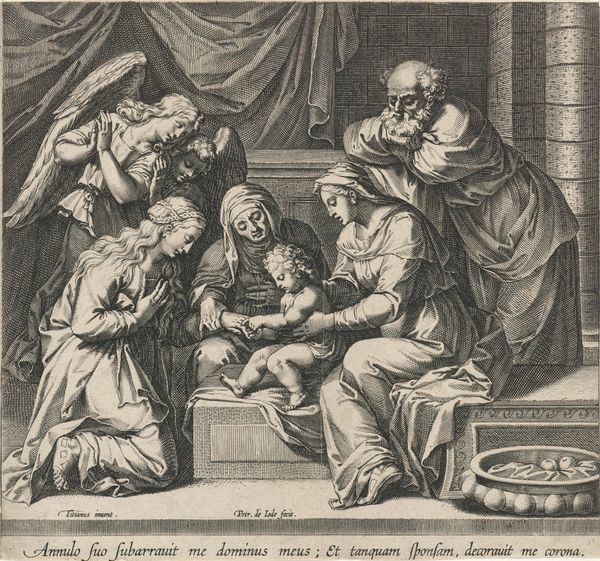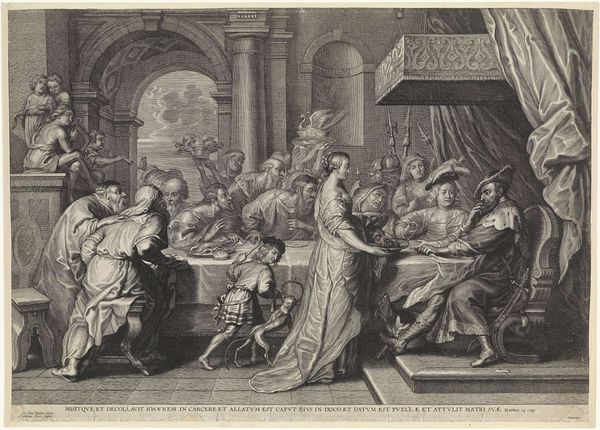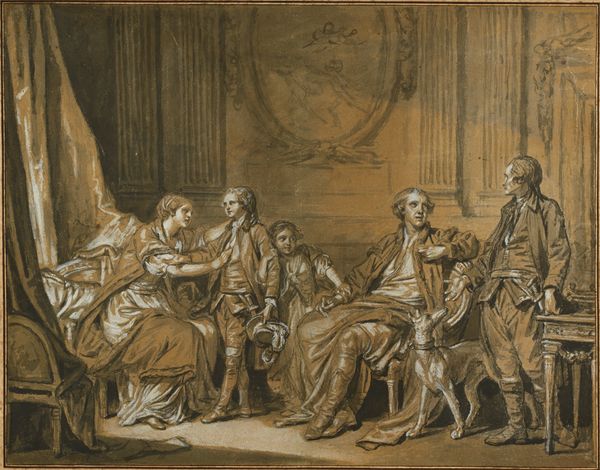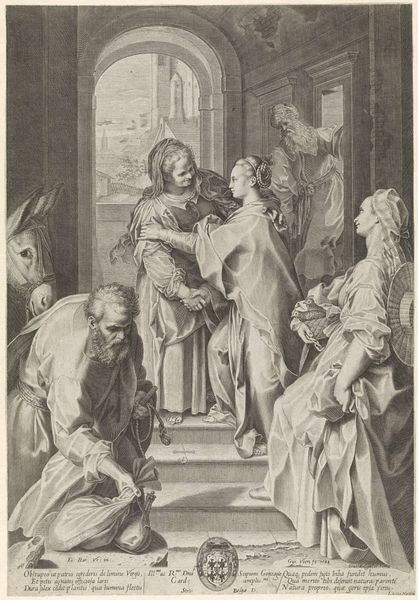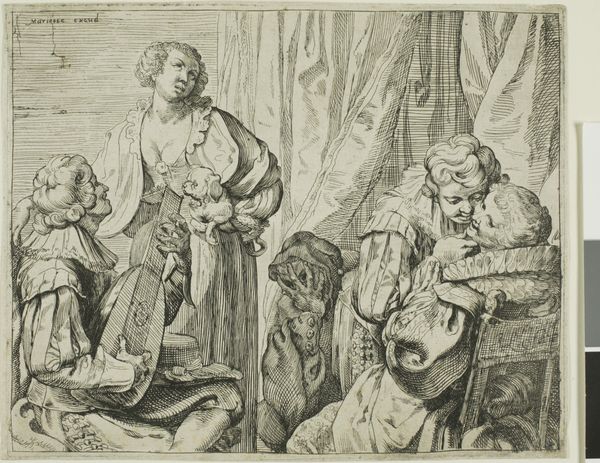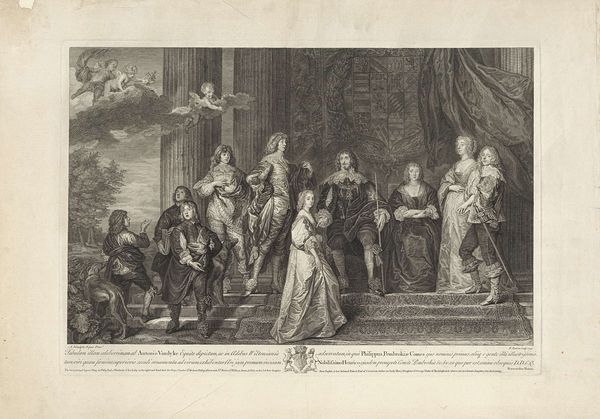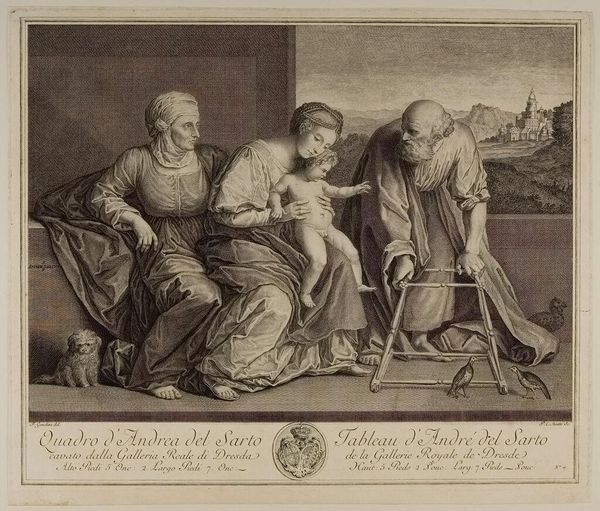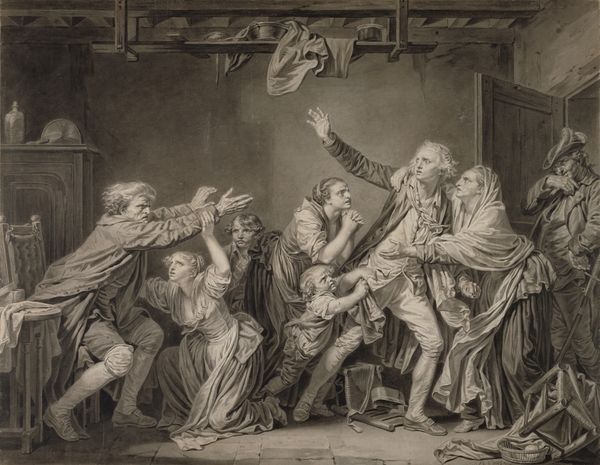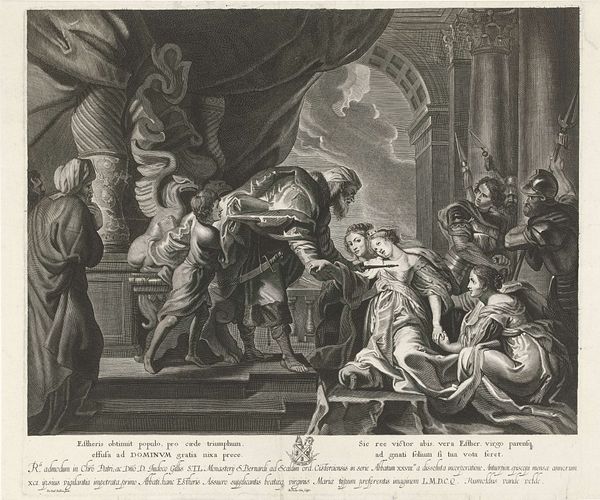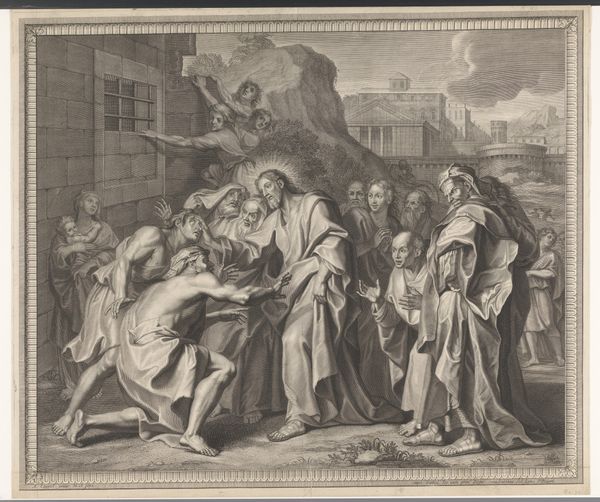
painting, oil-paint
#
narrative-art
#
baroque
#
painting
#
oil-paint
#
group-portraits
#
genre-painting
#
history-painting
Dimensions: height 138 cm, width 174 cm, depth 8 cm
Copyright: Rijks Museum: Open Domain
Editor: This is Hendrick Heerschop's 1656 oil painting, "Rebecca Receiving Presents from Abraham's Servant." It strikes me as very theatrical, almost staged. What do you see in this piece, from your perspective? Curator: I see a careful construction, one meant to project a certain status. Consider how biblical scenes were utilized within Dutch Golden Age painting; it wasn’t solely about religious devotion. Genre and history paintings, like this one, served powerful social functions, reinforcing values. Editor: What values would those be? I see a wealthy woman receiving expensive gifts. Curator: Exactly. Look at Rebecca’s posture, the rich fabrics, the architecture behind her. These aren’t simply illustrative details. They are indicators of status, both hers and, perhaps more subtly, the patron who commissioned the painting. Biblical stories offered moral frameworks, but also, crucially, avenues for displaying wealth and influence. How do you think viewers at the time would perceive this? Editor: As a reinforcement of the existing social hierarchy? An aspiration, maybe? Curator: Precisely. These images weren't innocent depictions, but rather tools within a complex web of social signaling. They presented ideals but were firmly rooted in the here and now, using biblical narrative to promote particular ideas of power, family, and virtue. Editor: So, it's more than just a Bible story; it is also a display of wealth and societal values of that era. Thank you for your insights. Curator: It is also a good reminder that images are never neutral, especially in their time. Each work reflects and shapes our cultural norms.
Comments
No comments
Be the first to comment and join the conversation on the ultimate creative platform.
